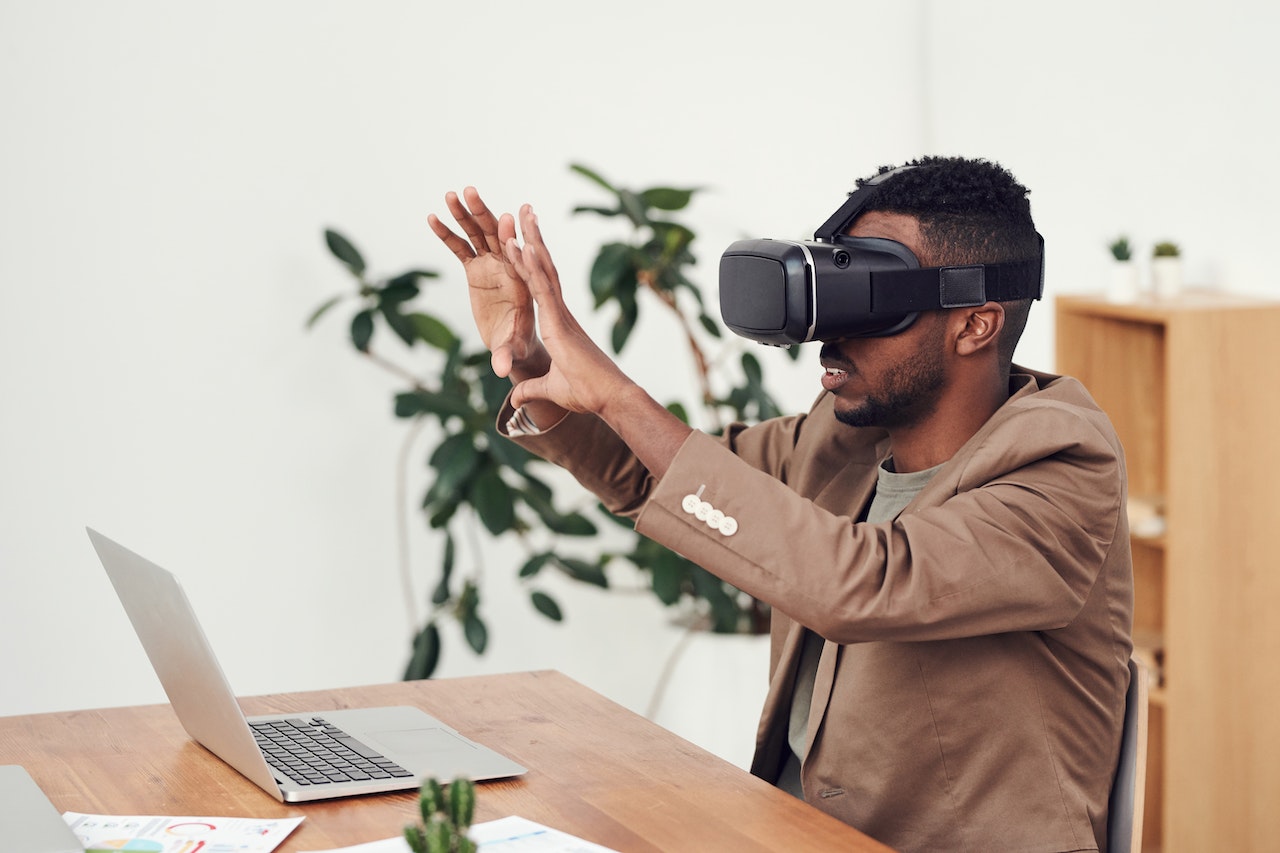In the dynamic world of entrepreneurship, a pitch deck presentation is a powerful tool that can seal the deal with investors. However, the competition to impress investors is sky-high, with over 1,000 pitches created daily in San Francisco alone, and the success rate of pitch decks is plummeting.
So, standing out from the crowd with an exceptional investment pitch is more crucial than ever before for startups. Enter the modern pitch decks that leverage the power of Augmented Reality (AR) and Virtual Reality (VR) to create highly engaging and convincing experiences for investors.
Sounds interesting? In this article, we’ll explore the applications and power of AR and VR in pitch decks and find out how you can apply them to create effective pitch decks. Let’s get started!
The Power of AR and VR in Modern Pitch Decks
Augmented reality is a technology that superimposes computer-generated images on your view of the real world. In this way, it offers a realistic composite view that enhances your perception of the actual environment. Virtual reality, on the other hand, is a computer-generated 3D simulation that places the user inside an experience, allowing them to look around and interact with 3D content and even other users.
Incorporating these technologies into modern pitch deck design can amplify their convincing power, setting them apart from competitors and raising their chances of success. For example, if you are developing real estate, you can apply VR to offer your investors a virtual tour of your proposed structure using VR and digital modeling. If you are developing new wearables, you could use AR to superimpose a 3D model of your product onto the investor’s body in a real-world environment.
AR and VR technologies have been increasingly integrated into pitch decks to create more immersive and engaging presentations. These technologies are transforming the way startups pitch to investors, enhancing the storytelling process and making it more interactive and visually appealing.
Need some help for your small biz? Check out Verizon Small Business Digital Ready
How Are AR and VR Applied in Pitch Decks?
AR and VR in pitch decks can be used in various ways to create an engrossing and compelling experience that surpasses traditional pitch decks. Let’s check out the top four applications of these immersive technologies in investor pitch decks.
Product Demonstrations
AR and VR can be used to provide a more immersive demonstration of a product or service. Instead of just talking about the product, startups can use these technologies to let investors experience the product in a more realistic and engaging way. Such immersive demos can help investors understand the product and its potential impact more deeply and quickly.
Data Visualization
Complex data and statistics can be visualized in a more engaging and understandable way using AR and VR. Instead of presenting data in traditional charts and graphs, startups can use these technologies to create interactive 3D models and simulations. This can help investors better understand the data and the insights derived from it.
Virtual Tours
Startups can use AR and VR to take investors on a virtual tour of their facilities, offices, or any other physical locations that are important to the business. Virtual tours are game changers that give investors a better sense of the company’s operations and culture without them lifting a finger! They are also bound to grow in popularity as businesses increasingly explore the metaverse.
Storytelling
AR and VR can be used to enhance the storytelling aspect of the pitch. Startups can use these technologies to create immersive narratives that take investors on a journey, helping them better understand the company’s mission, vision, and values.
Implementing AR and VR in Your Pitch Deck
The application of AR and VR into modern pitch decks involves similar steps. However, the hardware required, platforms, software, and presentation method vary greatly. Here’s a quick guide to help you effectively implement these technologies without confusion into your next investor deck-
Establish Your Goals
The first step is to clearly define what you aim to achieve with AR and VR. What aspects of your pitch can be enhanced with these technologies? Understanding your objectives will guide your implementation process.
Select an Appropriate AR or VR Platform
Numerous AR and VR platforms are available, each offering unique features and capabilities. Your choice of platform should align with your objectives and the type of presentation you’re planning to deliver.
Design a Storyboard
After selecting a platform, the next step is to create a storyboard for your presentation. This will act as a roadmap for your AR or VR content, detailing the sequence of events and interactions.
Develop Your AR or VR Content
With your storyboard as a guide, you can now start developing your AR or VR content. This may involve creating 3D models, animations, or other interactive elements. Depending on your resources and expertise, you might need to engage professionals for this step.
Incorporate AR or VR into Your Pitch Deck
Once your content is ready, it’s time to integrate it into your pitch deck design. This involves uploading your content to the AR or VR platform and configuring it to work seamlessly with your presentation.
Stay Compliant with Privacy and Security Regulations
If your AR and VR content involves collecting or processing personal data, ensure you comply with relevant privacy and data protection regulations. This is particularly important if you’re operating in sectors like healthcare or finance, where data privacy is paramount.
Test and Refine Your Content
Before you present your pitch, it’s crucial to test your AR or VR content to ensure it functions as intended. This allows you to identify and rectify any issues before your presentation.
Prepare the Necessary Hardware
Next, you’ll need to prepare the necessary hardware, such as VR headsets or AR glasses, displays, and controllers. Ensure that everything is set up and functioning properly before your presentation.
Consider Accessibility
Not everyone may be comfortable or able to use AR and VR technologies. Consider the needs of your audience and ensure that your presentation is accessible to everyone. This could involve providing alternative ways to experience the content for those who can’t or prefer not to use AR or VR.
Train and Practice
It’s important to familiarize yourself and your team with the AR or VR technology. Practice your presentation repeatedly to ensure perfect timing and smooth delivery without any hiccups.
Deliver Your Pitch
With everything set, you’re ready to deliver your pitch. Remember to engage your audience through active communication and leverage the immersive capabilities of AR and VR to make a lasting impression.
Collect Feedback and Iterate
After your presentation, gather feedback from your audience and use it to refine your approach. As AR and VR technologies continue to evolve, there’s always room for improvement.
Continual Learning and Upgrading
AR and VR technologies are rapidly evolving and it’s important to stay updated with the latest developments and advancements in these technologies. Attend workshops, webinars, and conferences, and continually learn about new tools and techniques that can enhance your presentations.
AR and VR in Action
Let’s have a look at some examples of AR and VR to create augmented interfaces or interactive 360-degree VR videos for modern pitch decks.
Video showing a virtual tour with interactive elements created by Unreal Engine to impress real estate investors with the power of 360-degree VR, AR, and digital modeling-
Virtual tour of WeWork workspaces to impress investors that is accessed using VR glasses with head tracking or simply swiping on the video-
Application of Augmented Reality by WannaKicks to provide investors and customers with a sneak peek at its existing or upcoming products on any device through virtual try-ons-
The SuN Takeaway
Immersive technologies VR and AR are revolutionizing pitch decks by providing investors with highly engaging and convincing experiences. As these technologies continue to gain traction, we can expect to see an increasing number of businesses using VR and AR to present their ventures to investors, heralding a new era of modern investment pitches. So, if you are looking to raise capital for your startup, consider getting on board the VR and AR bandwagon without delay!






